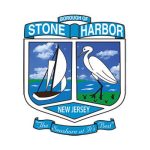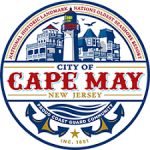Cape May’s Dave Cluff helped pilot largest ship ever to make port in Philly
When the ultralong container vessel Marco Polo docked at the Port of Philadelphia on Friday, March 8, the largest ship ever to dock in the city, one of its two pilots was Dave Cluff of Cape May.
The Marco Polo is approximately 1,300 feet long and 175 feet wide, and it has a deep draft of 41 feet. Standing on end it would be taller than the tallest building in Philadelphia – and is one of the largest ships in the world. Docking it, according to a CBS-3 report, required the dredging of 5 feet of material from the port area, as well as some careful maneuvering by the ship’s operators.
Cluff, 59, who was born and raised in Cape May and is a 1982 graduate of Lower Cape May Regional High School, said the ship had roughly 6 to 8 feet of clearance as it went under the Delaware Memorial Bridge. The registered height of the vessel is a little over 179 feet above the water’s surface.
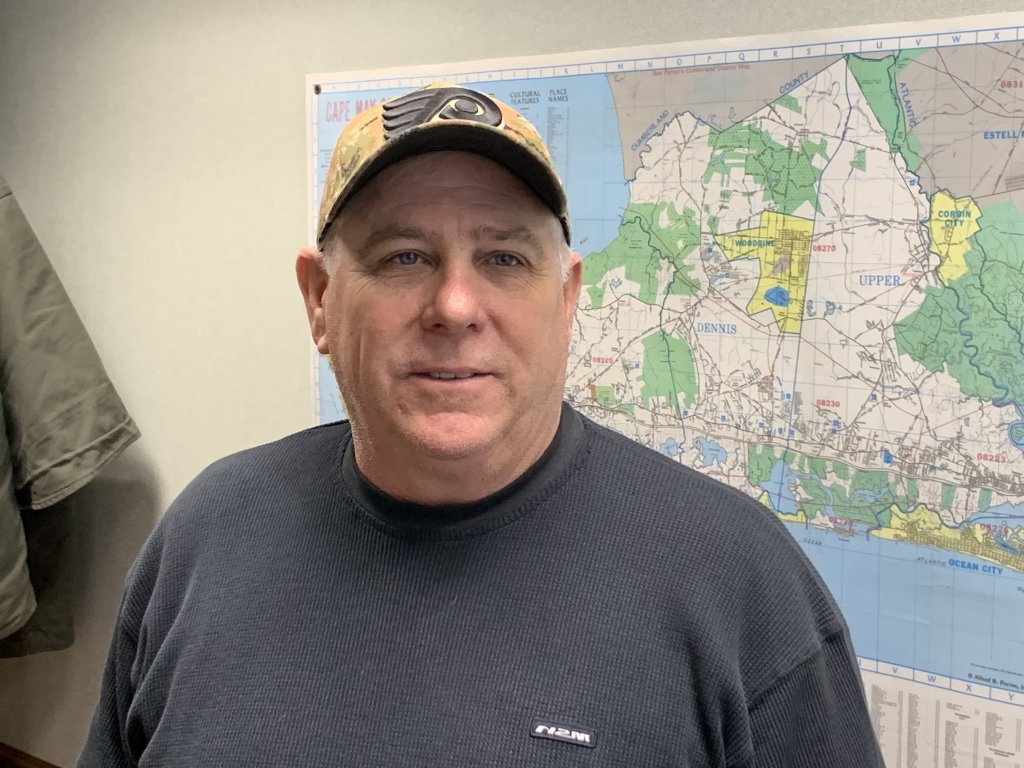
It was Cluff’s business to be concerned about such calculations and others because he is a state pilot, licensed by Pennsylvania.
“Any ship that comes into U.S. waters with a foreign flag, or a U.S. ship with foreign products, it has to take a state pilot,” he said.
Cluff said shipping agents will let the pilots association know when a ship’s coming, and pilots can also look at information on their phones or on the internet to track an arrival. The association’s tower at Cape Henlopen, Delaware, will watch the ship on radar and determine exactly where it will be; a launch will take the pilot to the ship when it’s about 20 minutes away.
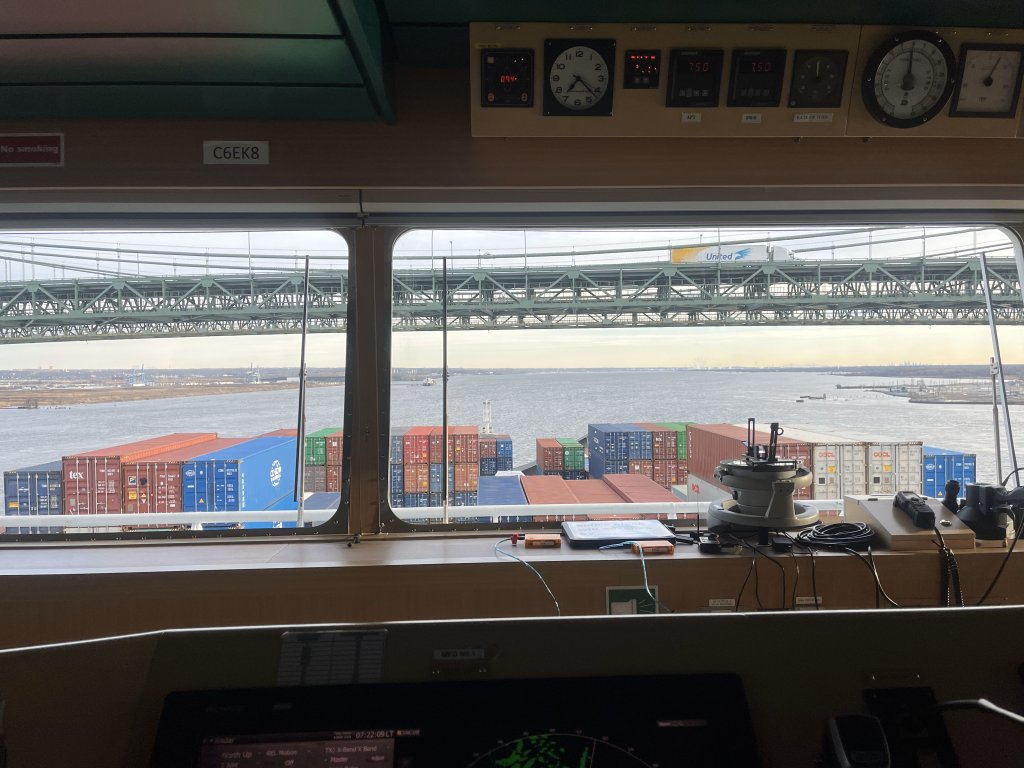
The technology the pilots use is state of the art. The Pilots Association for the Bay and River Delaware, to which Cluff belongs, was the first association, he said, to use a laptop differential GPS, which takes signals from shore and from satellites and triangulates.
The laptop the pilots carry with them can show them where they’re at, the channel, and other vessels in the area. Their equipment is accurate to within 1 meter, amazing considering the ship is just under 400 meters long. They can also plug in the name of a ship and get a readout on the ship’s dimensions.
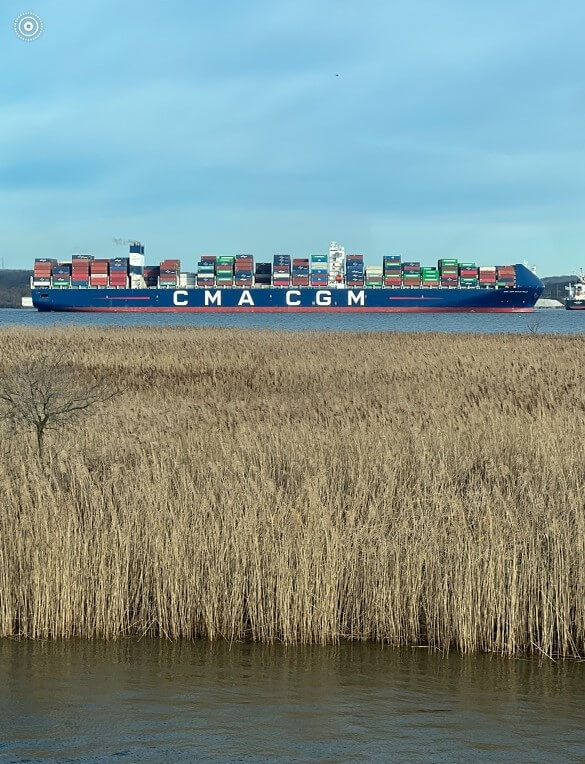
When they get to the ship, the pilot – or in the case of an ultralong container vessel, two pilots – either go up a gangway or climb up a Jacob’s ladder.
“Once we’re onboard, we’re in charge,” Cluff said.
He said about 90% of ships are foreign-flagged, requiring a state pilot.
Cluff began a four-year apprenticeship in 1998 and will begin his 22nd year as a licensed pilot in August. He explained the Marco Polo’s need for a state pilot into the Port of Philadelphia.
He said a state pilot gets onboard and navigates the ship up the bay and river to the dock at Packer Avenue. The super-sized container ship has to go under two well-known and well-traveled bridges, the Delaware Memorial Bridge and the Commodore Barry Bridge, before docking.
Cluff was asked about the handling of a 1,300-foot ship, which might be thought to be very slow-turning.
But he countered: “They can turn pretty quick. We can turn 30 or 40 degrees in half a mile.” When out at sea, at a speed of 20 knots, it might take 5 miles to stop.
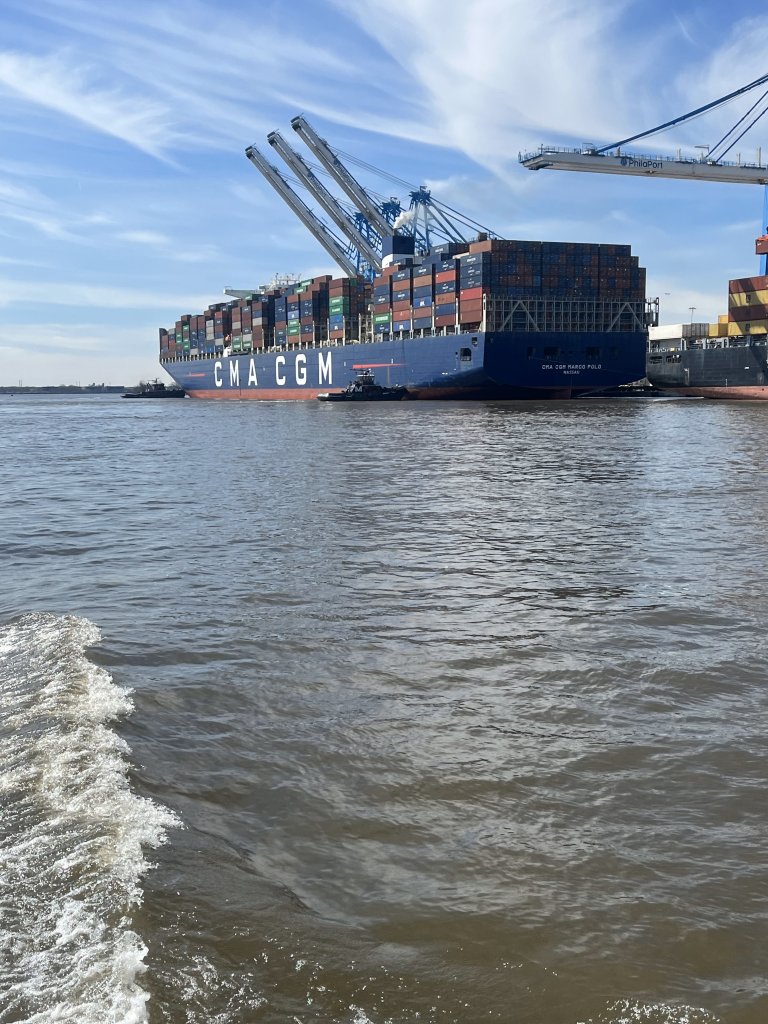
Cluff said that, other than going under the bridges, the job wasn’t anything tricky.
“Well, it was the longest one ever to come. This is the first one 1,300 feet,” he said.
Asked if other things have changed besides the length of vessels, Cluff said they are bigger and faster, resulting in there being fewer vessels. His father, Daniel Cluff Jr., and uncle, Thomas Cluff, started piloting in the 1960s, and piloted for over four decades.
He said that when he applied to the pilots association in 1988 there were 90 pilots, and now there are 67. However, the amount of cargo being shipped is greater now, he said, due to the size and speed of the ships.
He said his brother Dennis is a pilot, and Dennis’ son is an apprentice pilot.
“He’s gonna be the third generation of pilots,” Cluff said.
His grandfather, Daniel Webster Cluff, was in the Coast Guard for 30 years. He was stationed at Coast Guard Station Chatham, Massachusetts, and picked the crew that went out in Coast Guard Motor Lifeboat CG-36500, whose rescue mission was featured in the movie “The Finest Hours,” made by Disney in 2016. He used radar to help guide that lifeboat back in from the sea in a blinding blizzard. A similar motor lifeboat is currently being restored in Lower Township.
Cluff will probably see more ultralong container vessels in the near future.
“They are going to start coming on a regular basis,” he said.
The Marco Polo, after unloading its cargo, mainly clementines from Morocco, then headed south to Virginia and Georgia.
Thoughts? Questions? Call Christopher South at 609-886-8600 x-128 or email csouth@cmcherald.com






